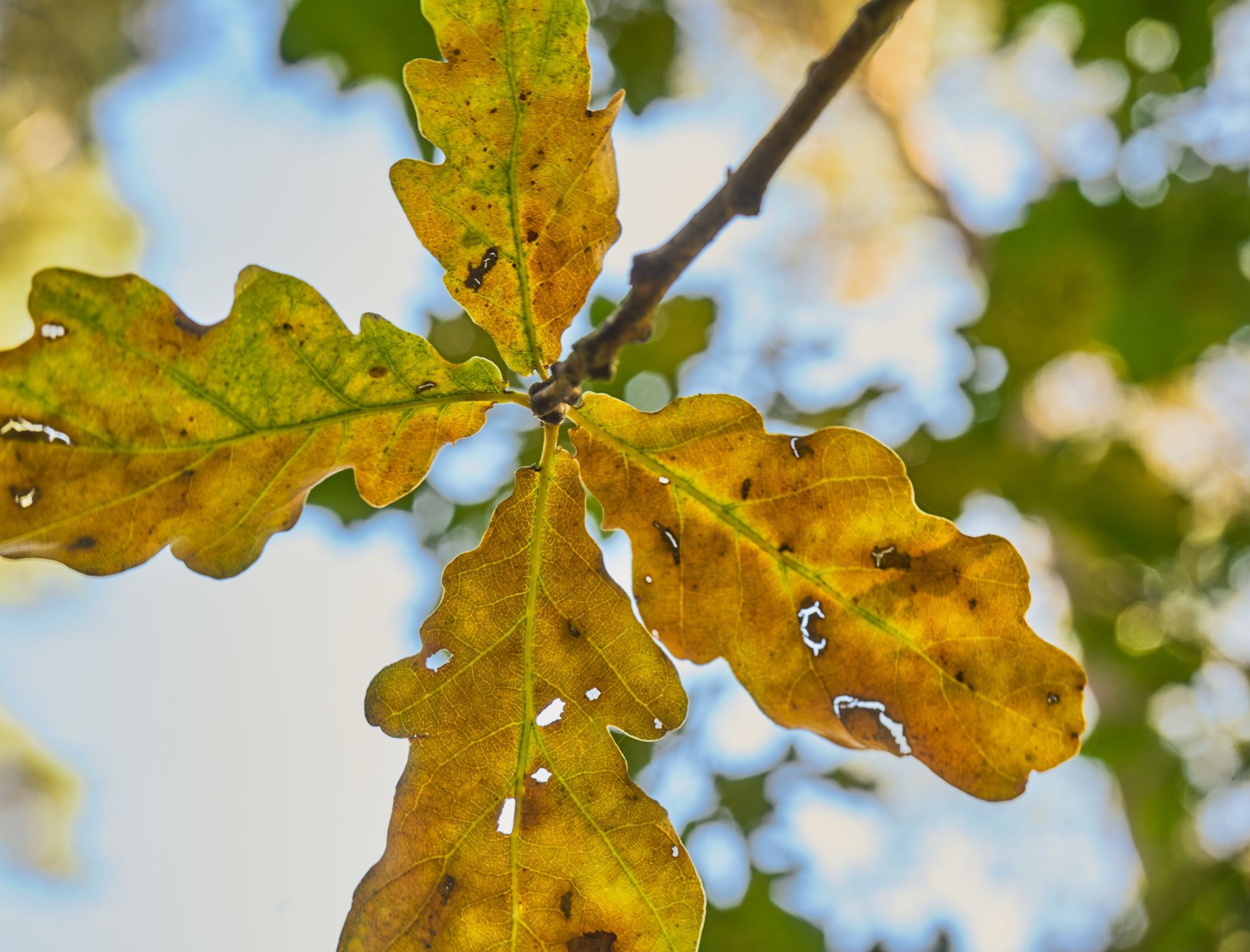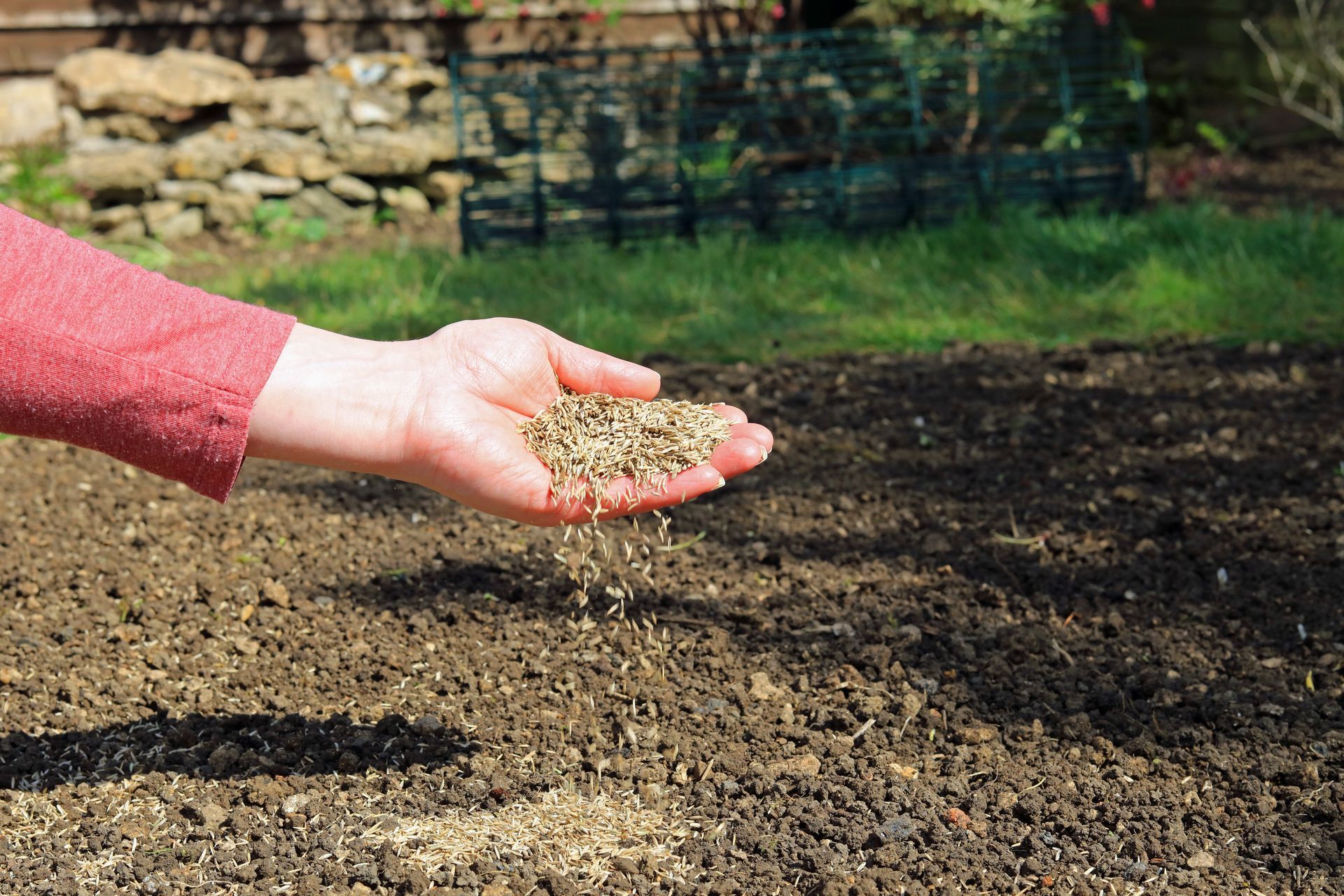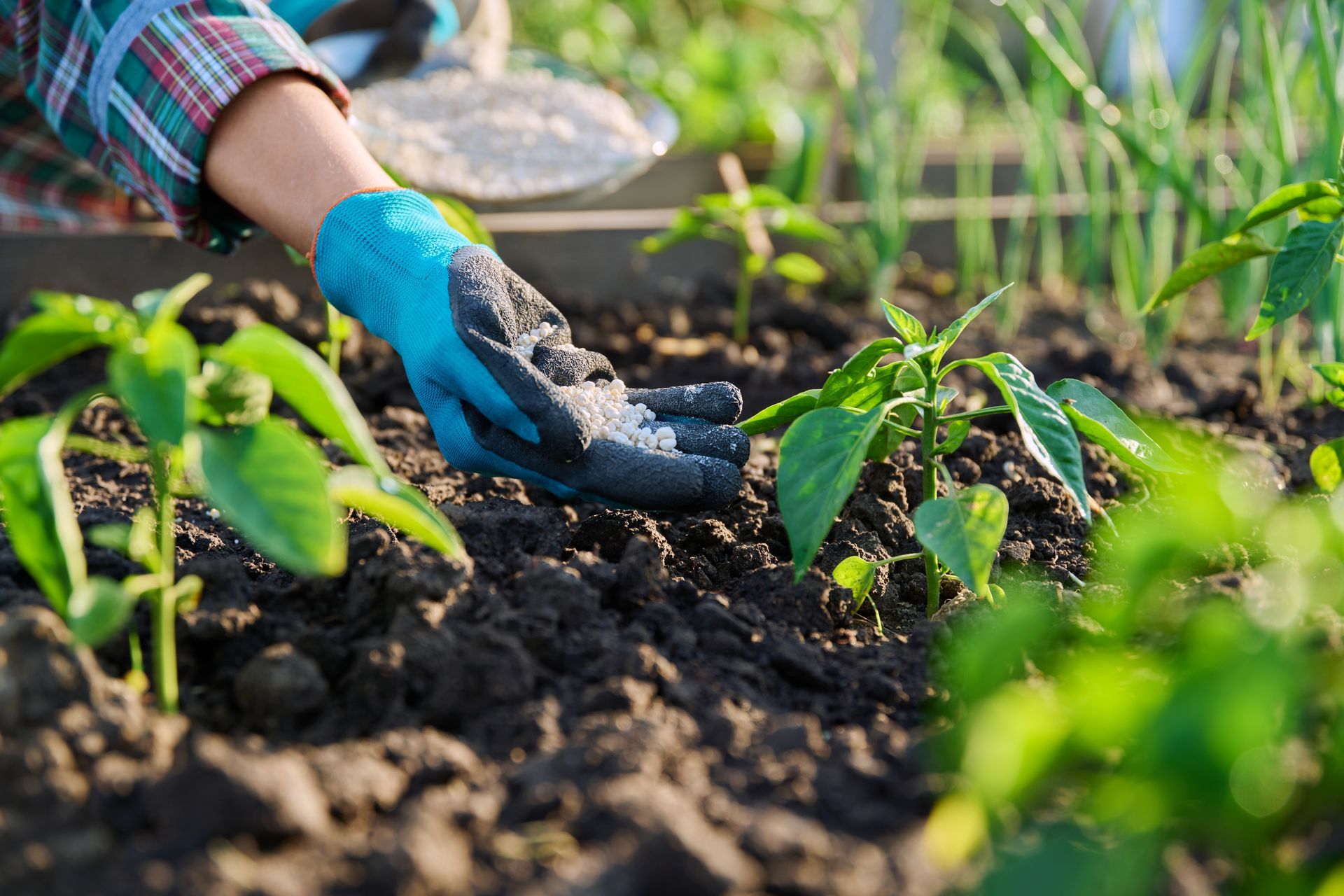May 6, 2025
Common Tree Diseases Affecting Michigan Landscapes

Michigan’s rich landscape hosts a wide array of beautiful trees including Red Oaks, Sycamore, Breech and Ash – to name a few. However, these charming trees aren’t immune to disease, which can quietly destroy your trees from the inside out. To keep your landscape healthy, let’s look at some common diseases affecting Michigan trees. We’ll explore symptoms, treatment and prevention so homeowners can keep their landscape vibrant.
Oak Wilt
Oak Wilt is a fungal disease that attacks oak trees. The fungus harms the tree by infiltrating the water-conductive tissues and plugging the tree’s vessels. Oak Wilt makes it hard for trees to take in water, causing wilting and even death.
Symptoms:
This fungal disease is typically identified through the leaves. In Red and Black Oaks, the outer portion of their leaves turns brown and yellow, while the middle tends to remain green. Symptoms usually start at the top of the tree and continue downwards. In severe cases, wounds can appear on the outside of the tree.
Treatment: Unfortunately, Oak Wilt cannot be cured in Red and Black Oaks once they are infected. Prevention is key when combating the disease. Applying fungicides, removing dead trees and disrupting roof grafts are crucial to stopping Oak Wilt in its tracks.
Beech Bark
This is a type of disease that involves both insects and fungi. As the name suggests, it affects Beech Bark trees. First, scale insects infest the tree and feed off its bark, which creates damage that allows fungi to move in. Once fungi are present, they kill the inside of the bark and work their way to the exterior. In severe cases, Beech Bark can kill trees.
Symptoms:
A white cast on the tree’s exterior can indicate the presence of scale insects. Additionally, cankers will appear on the trunk and branches after fungi have severely damaged the tree.
Treatment: Similarly to Oak Wilt, Beech Bark can’t be cured once a tree is infected. However, insecticides can be used to manage the population of the scale insects, reducing physical damage and limiting the likelihood for fungal infections to develop. Other methods include blasting the infected areas with water and removing infected limbs to reduce the risk of fungal infection.
Identifying sick trees and separating them from healthy ones can limit the spread of the disease. Prevention can also be done by protecting the roots during harvesting and adding diverse plant life to your landscape.
Anthracnose
This is a fungal disease that affects shade trees and some shrubs. In Michigan, Oak, Maple, Ash and Sycamores are susceptible to the disease. The disease, which typically occurs in Spring, is spread by wind or rain. Once a tree is infected, its leaves turn brown and fall off. Smaller branches can also be killed, causing twig dieback to occur. While Anthracnose is not deadly for trees, it can cause them to lose their foliage and make them more susceptible to other diseases.
Symptoms:
Anthracnose causes browning in leaves. Trees may not have leaves or their foliage appears thin. In severe cases, canker sores can develop on the exterior of the tree.
Treatment:
Luckily, Anthracnose isn’t typically a cosmetic issue and may not have a significant impact on your tree’s health. Although, if you suspect the disease is harming the infected tree, you can take steps to manage the disease. Pruning and applying fungicide helps to stop the disease from worsening.
The disease can be prevented in healthy trees by removing dead twigs and leaves. Planting trees farther apart and supplying them with sufficient water can mitigate the risk of transmission. Applying fungicides and regular maintenance can make your trees more resistant to infection.
Apple Scab
Also known as “Pear Scab,” Apple Scab is a fungal disease that attacks trees and shrubs in the rose family. In Michigan, Apple trees and Crabapple trees are the most susceptible. The disease weakens the trees, causing scabbing to occur on its fruits. While the disease isn’t deadly, it can make them more susceptible to other diseases.
Symptoms:
Anthracnose causes brown spots to appear on the tree’s leaves. Once the disease has advanced, scabbing appears on the fruits of the tree, causing them to be unsightly.
Treatment:
When trees become infected, they can’t be cured. However, fungicides and pruning can be applied to prevent the disease from spreading to healthy trees. Removing dead leaves and twigs can also reduce the risk of transmission.
Seek Professional Help When Dealing With Tree Disease
If you suspect your tree is suffering from an illness or disease, it's important you seek professional advice. Tree and lawn care specialists have the experience needed to accurately identify potential diseases. Additionally, they have the equipment and knowledge to properly treat the tree’s illness. By seeking professional help, you can ensure the longevity of your trees and prevent disease from spreading to other areas of your landscape.
Need Professional Lawncare Services? We’ve Got You Covered!
If you're looking to prevent or treat tree disease, Visionary Fertilization is standing by! Located in Shelby Township, we serve the surrounding communities in Macomb County. We specialize in tree and shrub health and even have a program dedicated to maintaining their health.
For more information about our Tree and Shrub program, give us a call at 586-684-1327. To learn more about other services, including lawn care and outdoor pest control, click the link
here.




